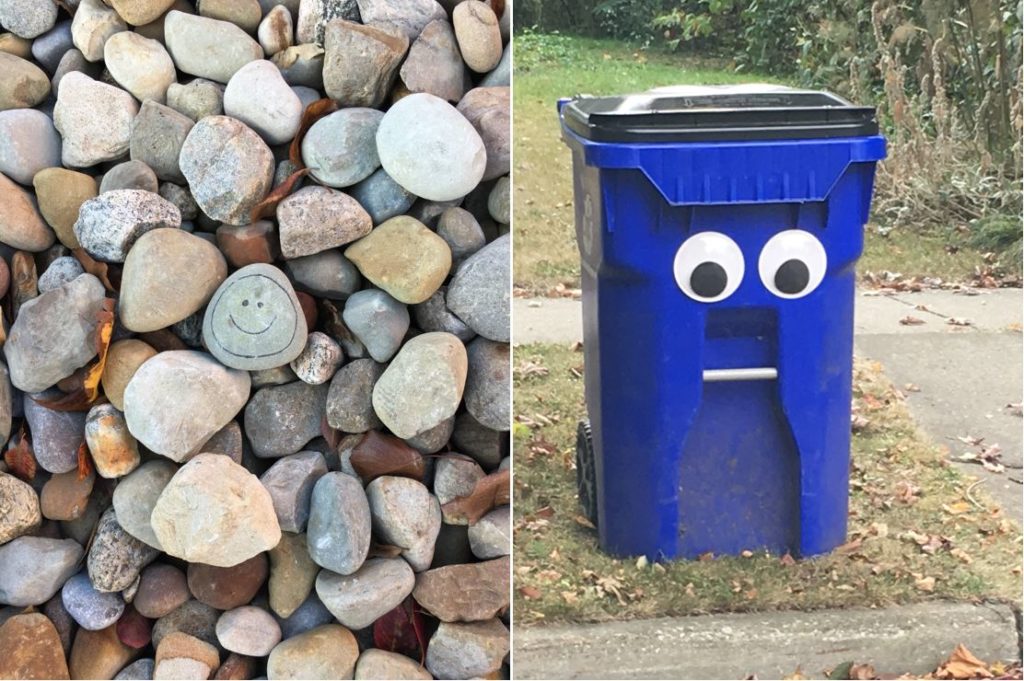With the question “Is this all there is?”, my mind immediately went to the ’68 French student protest slogan “Under the street, the beach.”
This is never all there is.
 We hunker down, in the face of bleak news, fake news, my friends, my colleagues, my students, and I, here in Kent, Ohio, USA.
We hunker down, in the face of bleak news, fake news, my friends, my colleagues, my students, and I, here in Kent, Ohio, USA.
Ohio is “Home.”
We have to drive to get anywhere else.
But we know it is not all there is.
We know about Charlottesville, we know about Syria, we know about Puerto Rico. We cannot unknow, but we can forget, we do forget, in the everyday. We stay in the local, partially aware of the global.
Yet, there are moments when the sacred erupts. When death and pain arrive, when values are directly challenged, when another’s child holds on for a long hug. “Under the street, the beach.” Compassion and beauty are still real.
These young people still care. They may not belong to a political party, they may not regularly attend a church, they may hold much more faith in Science than God, but humanity and the Earth’s future is their concern. Their neighbor is their concern. We must empower them.
This is a time of anxiety. The time is fear, mutual distrust, and yet still love.
2020 will see the fiftieth anniversary of the May 4 shootings at Kent State, the protests leading to them inspired partially by May 1968 in France. President Richard Nixon had announced invasion of Cambodia, alongside Vietnam, and this became too much. The global had disrupted the local with hearty sons drafted to fight in a distant land, seemingly hopelessly, and news of unrest internationally. Kent State now works not to forget, to commemorate, to learn from. Official domestic crowd-control tactics certainly improved following May 4 and Jackson State and the subsequent hearings. One of Nixon’s top advisers has cited the events as the beginning of the end of that administration. So, acts led to change.
Progress, though? History teaches us that a teleological view of it, of steady progress, is false, inaccurate. Writing within academia, I am still committed to accuracy, to, dare I say it, truth, at least a truth. I analyze and deconstruct Science as an institution in my research, yet remain part of it. I evaluate data and knowledge, discriminating between the valid and invalid, based upon established criteria. I learn and I teach. These acts alone imply some sort of faith and hope in the future. However, if history is not progressive, if I cannot believe that we are gradually moving toward some global goal of improving the world for humans and everyone else who shares the planet, then, is this all there is? Is sociology only a counsel of despair (as I sometimes feel in my Social Problems class)?
Perhaps, perhaps not. The arts and humanities and social sciences teach us that there are pulses and inconsistencies over time. There are also relationships. Without reference to a supernatural world, there are still relationships, and these can be sacred and transcend space-time.
There are those who we consider ourselves in relationship with, and those we do not. Who is in? Who is out? Who gets to belong? Do I? Do you? Does the immigrant, the trans person? Who is the Other? In Georg Simmel’s view, in George Herbert Mead’s view, in Emmanuel Levinas’s view, in Martin Buber’s view, in Zygmunt Bauman’s view, there is no “I” without you. In Edward Said’s view, we differentiate and distance ourselves from and consequently denigrate the Other. In I. M. Lewis’s view, the Other is essential to spirit possession. In all these senses, we need the Other. We all make and maintain boundaries of belonging, within which Bruno Latour and the transhumanists want to include nonhumans and the biosphere, perhaps until there is no Other left at all. So, then, there may no longer be a me either. It could be that there is a future of oneness for the world after all, transcendental or not. This is never all there is.
Transhumanist futures, however, can be difficult to conceive on a cold, wet day in Ohio, as my life continues, with its pleasures, its existential security, its challenges, day in day out: every day, as do the lives of many others locally. Then, I spy a rock with a smiley face on the ground. I drive past a trash can with googly eyes every Wednesday.

The nonhuman is made human, begins to belong, is called into relationship. Through simple things, I am reminded of fun and play, and of communication with others.
So, let us rebel against this time of anxiety, fear, and mutual distrust, through fun and play and dialogue and love and hope and empathy and compassion and by expanding our boundaries of belonging. Let us educate and empower and keep believing.
This is never all there is. Under the street, the beach.











